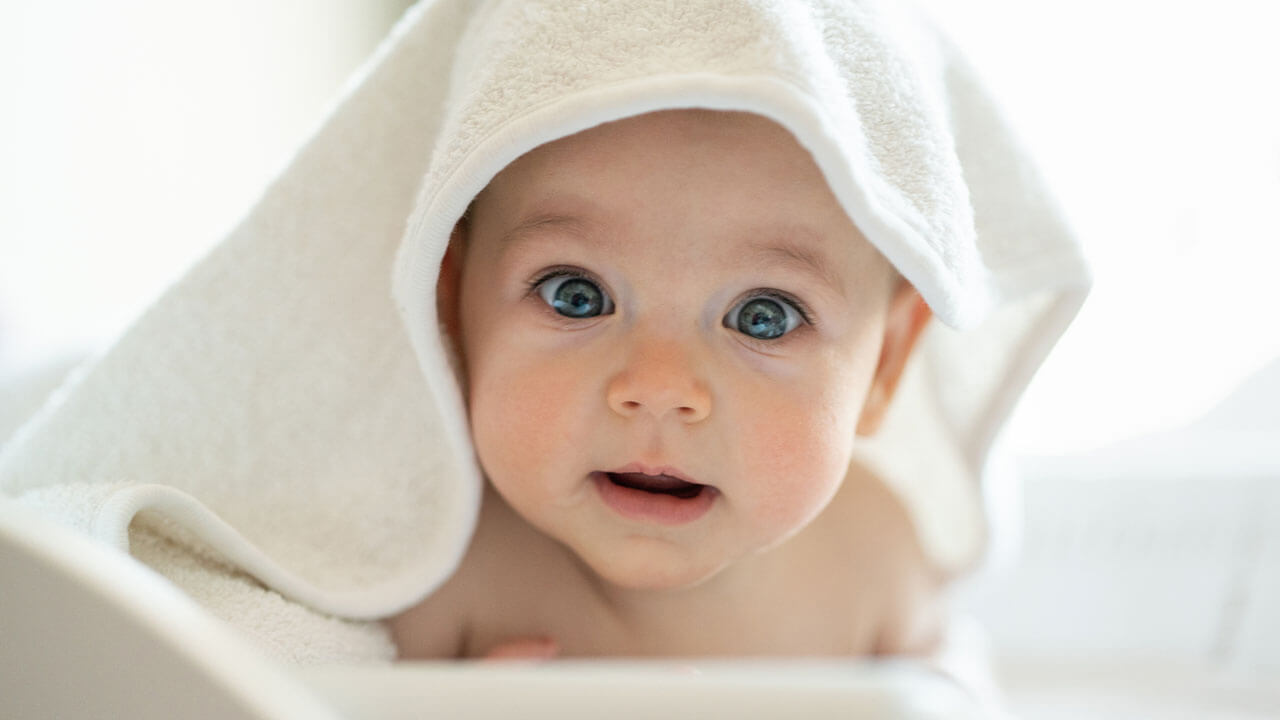Splish, splash - it’s time for your baby’s bath! But how often should you be having bath time, and how can you keep baby safe in the bath?
Sponge baths should be given until your newborn’s umbilical cord stump falls off, usually by 1 to 2 weeks of age. Some tips for a safe sponge bath:
When bathing baby, use an infant tub or sink. Infant tubs will often have a sloped, textured surface or sling that keeps your baby from sliding. Infant tubs that were manufactured after 2017 meet the current safety standards. You can also use a sink or a plastic tub lined with a clean towel. Just be careful, as sinks are slippery and have faucets and handles that stick out. Avoid using bath seats, as unfortunately these can easily tip over and cause drowning.
To prep for the bath, fill the basin with about two inches of water that feels warm – not hot – to the inside of your wrist or elbow. The American Academy of Pediatrics recommends that the hottest temperature at the faucet should be no more than 120 degrees to help avoid burns. In fact, hot water scalds are the top cause of burns among babies and young children.
Use a mild shampoo and cup your hands across baby’s forehead so the suds go to the sides of baby’s face instead of in their eyes. After the bath, dry baby with a soft towel and apply a lotion or moisturizer to keep their skin from drying out.
Bath time is an excellent time to practice “touch supervision,” where you always have one hand on baby. It is also an opportunity to start practicing infant water safety. Never leave a baby alone in the bath, even for an instant. If you need to step away from the tub or sink, you must take baby with you.
In addition to bathing, many parents are concerned about safety when having to trim baby’s nails. You may find it helpful to trim baby’s nails when they are asleep, when their ands aren’t moving. To trim, push down the fingertip skin to get the clipper or scissors around both sides of the nails. Finish off any sharp or rough edges with a file or emery board. For parents who are worried, simply file them. Filing their nails works well too.
If you have more questions about bathing your baby, talk with a Prevea Pediatrician.
Sponge baths should be given until your newborn’s umbilical cord stump falls off, usually by 1 to 2 weeks of age. Some tips for a safe sponge bath:
- Get supplies ready before you begin and have them within reach, including a basin of water, damp washcloth rinsed in soap-free water and dry towel.
- Lay baby on a flat surface that is comfortable for both you and baby, such as a changing table, bed, floor or the counter next to the sink. Pad hard surfaces with a blanket or towel.
- Start washing baby’s face first, then the rest of the body, and lastly the diaper area. Use the dampened cloth, being careful not to get water into baby’s eyes or mouth. Pay special attention to creases under the arms, behind the ears, around the neck and in the diaper area.
- Keep baby warm. Wrap them in a dry towel and uncover only the parts of baby’s body you are actively washing.
When bathing baby, use an infant tub or sink. Infant tubs will often have a sloped, textured surface or sling that keeps your baby from sliding. Infant tubs that were manufactured after 2017 meet the current safety standards. You can also use a sink or a plastic tub lined with a clean towel. Just be careful, as sinks are slippery and have faucets and handles that stick out. Avoid using bath seats, as unfortunately these can easily tip over and cause drowning.
To prep for the bath, fill the basin with about two inches of water that feels warm – not hot – to the inside of your wrist or elbow. The American Academy of Pediatrics recommends that the hottest temperature at the faucet should be no more than 120 degrees to help avoid burns. In fact, hot water scalds are the top cause of burns among babies and young children.
Use a mild shampoo and cup your hands across baby’s forehead so the suds go to the sides of baby’s face instead of in their eyes. After the bath, dry baby with a soft towel and apply a lotion or moisturizer to keep their skin from drying out.
Bath time is an excellent time to practice “touch supervision,” where you always have one hand on baby. It is also an opportunity to start practicing infant water safety. Never leave a baby alone in the bath, even for an instant. If you need to step away from the tub or sink, you must take baby with you.
In addition to bathing, many parents are concerned about safety when having to trim baby’s nails. You may find it helpful to trim baby’s nails when they are asleep, when their ands aren’t moving. To trim, push down the fingertip skin to get the clipper or scissors around both sides of the nails. Finish off any sharp or rough edges with a file or emery board. For parents who are worried, simply file them. Filing their nails works well too.
If you have more questions about bathing your baby, talk with a Prevea Pediatrician.




